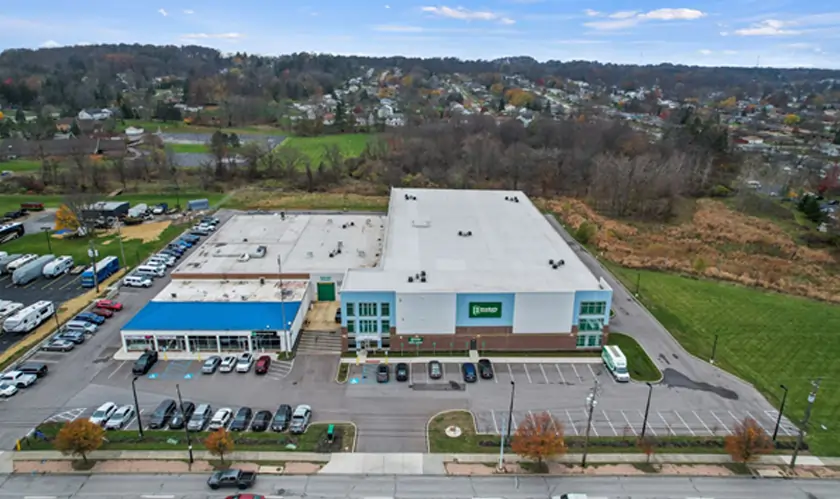Home Technology Storage technology How Do Storage Unit Prices in ...
Storage Technology

CIO Bulletin
07 Febuary, 2025
Storage unit prices in Ohio vary depending on location, size, and amenities. Compared to nearby cities, Ohio generally offers more affordable storage options, with average monthly rates ranging from $35 to $100. This competitive pricing makes Ohio an attractive option for those seeking cost-effective storage solutions.
Urban areas in Ohio, such as Cleveland, typically have higher storage unit costs than rural regions. In Cleveland, prices can fluctuate based on neighbourhood, with areas like Ohio City offering units for around $91 per month, while Clark-Fulton averages $110 monthly. These rates remain competitive when compared to larger metropolitan areas in neighbouring states while still offering a range of options to fit different budgets and needs.
Depending on your location, you may find more affordable alternatives in nearby suburbs, where storage rates tend to be lower than in the city center. With easy access to major roads and a variety of unit sizes available, suburban storage facilities can offer both convenience and cost savings. Exploring some options, such as storage units in Parma, OH can help you find a solution that fits your budget while still providing easy access to your belongings. Taking the time to compare locations and amenities will ensure you choose a storage option that meets both your short-term and long-term needs.
Key Takeaways
Ohio's self-storage market offers diverse options at varying price points across different cities and neighbourhoods. Factors like unit size, climate control, and specialized storage needs influence costs.
Storage unit prices in Ohio range from $5 to $500+ per month. Columbus, Cleveland, and Cincinnati typically have higher rates due to urban demand. Smaller cities like Ashland offer more affordable options, with units starting at $21 monthly.
Suburban areas often provide better value than city centres. Rural locations may have limited choices but lower prices. The state's average cost for a standard 10x10 unit is $80-$100 per month.
Seasonal fluctuations affect pricing. Summer months see increased demand and costs due to moves and student storage needs.
Unit sizes vary widely, from 5x5 lockers to 20x30 spaces for larger items:
Climate-controlled units cost 20-30% more but protect sensitive items from Ohio's temperature swings. A climate-controlled 10x10 unit averages $100-$150 monthly.
Non-climate-controlled options suit sturdy items and offer savings. A standard 10x10 unit might cost $70-$100 in this category.
RV storage prices depend on size and cover type:
Car storage ranges from $50-$250 monthly based on protection level. Boat storage costs mirror RV rates but may be higher in areas near lakes or rivers.
Wine storage is a niche market, with climate-controlled units starting at $200/month for small collections. Larger cellars can cost $500+ monthly.
These specialized options are more common in larger cities and tourist areas, with prices reflecting local demand and amenities.

Economic factors and population trends significantly influence self-storage demand in Ohio and nearby cities. These indicators shape both short-term and long-term storage needs for individuals and businesses.
Ohio's population growth has been modest in recent years, with some areas experiencing more significant increases. Columbus, the state capital, has seen steady population gains, driving demand for self-storage units. In contrast, Cleveland has faced population declines, potentially affecting storage needs differently.
Job growth plays a crucial role in storage demand. Cities with robust employment opportunities tend to attract more residents, leading to increased storage requirements. Columbus has outpaced other Ohio cities in job creation, particularly in sectors like technology and healthcare. This growth has spurred demand for both residential and commercial storage solutions.
Businesses in Ohio increasingly rely on self-storage for inventory management and document storage. The rise of e-commerce has led to higher demand for flexible storage options, especially in urban centres like Columbus and Cleveland.
Long-term storage trends in Ohio reflect changing lifestyles and economic conditions. As housing costs rise in certain areas, some residents opt for smaller living spaces, creating a need for off-site storage. Additionally, businesses facing economic uncertainty may downsize office space, turning to self-storage for excess equipment and records.
Self-storage construction trends in Ohio vary by region. While some areas have seen new facility developments, others face market saturation. Developers are focusing on strategic locations near growing population centres and business hubs to meet evolving storage demands.
Conclusion
Storage unit prices in Ohio vary based on location, size, and amenities. Urban areas like Cleveland tend to have higher rates compared to smaller towns. Neighbouring states may offer more affordable options in some cases.
Comparing prices across cities and regions is essential for finding the best deal. Renters should consider factors beyond cost, such as security features and accessibility. Researching multiple facilities and reading reviews can help ensure a satisfactory storage experience.







